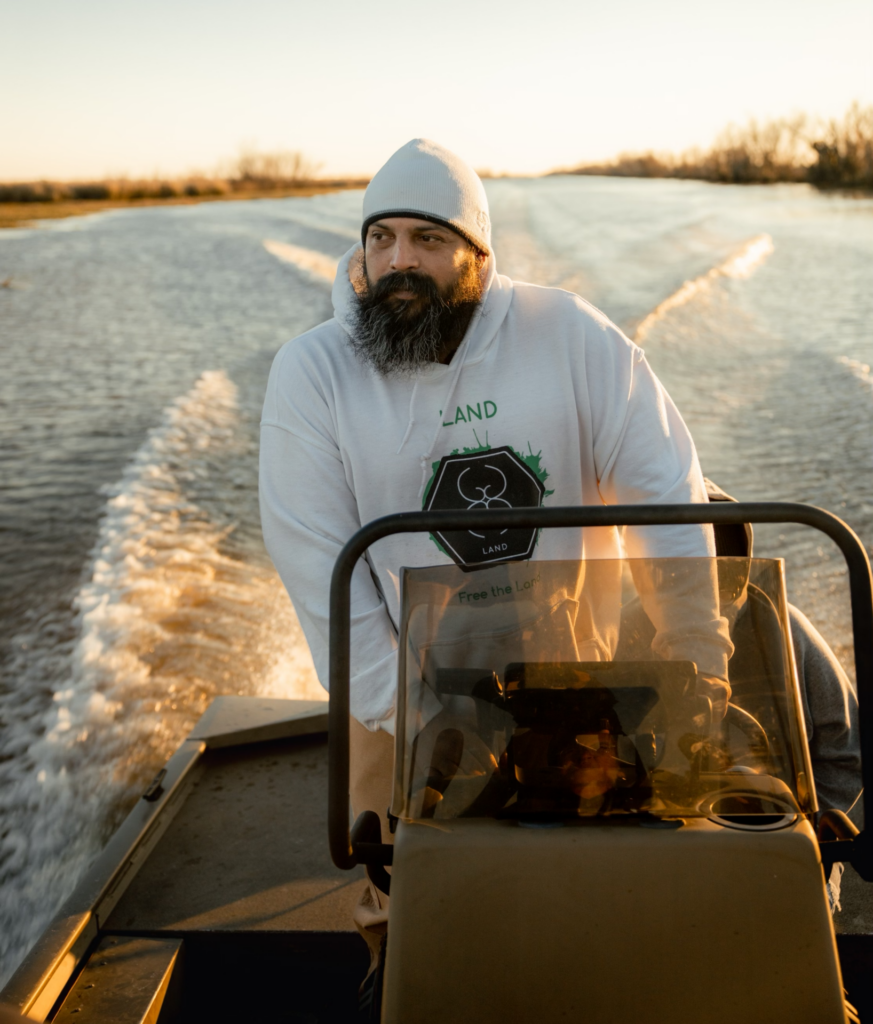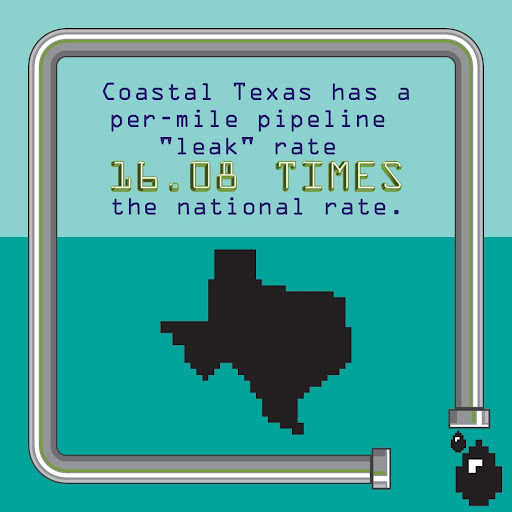
Restoring Louisiana’s
Wetland Coast
Wetlands Protect Louisiana Communities:
One acre of wetlands can hold up to 1 million gallons of stormwater during a flood. Hurricane storm surges are reduced by one foot for every 2.7 miles of wetlands.
Keep up-to-date on the issues you care about. Sign up for Healthy Gulf updates to stay informed, volunteer, and take action.
Get Updates.
Stay Informed.
The Problem
Louisiana is disappearing at an astonishing rate: a football field of wetlands vanishes every 1.5 hours.
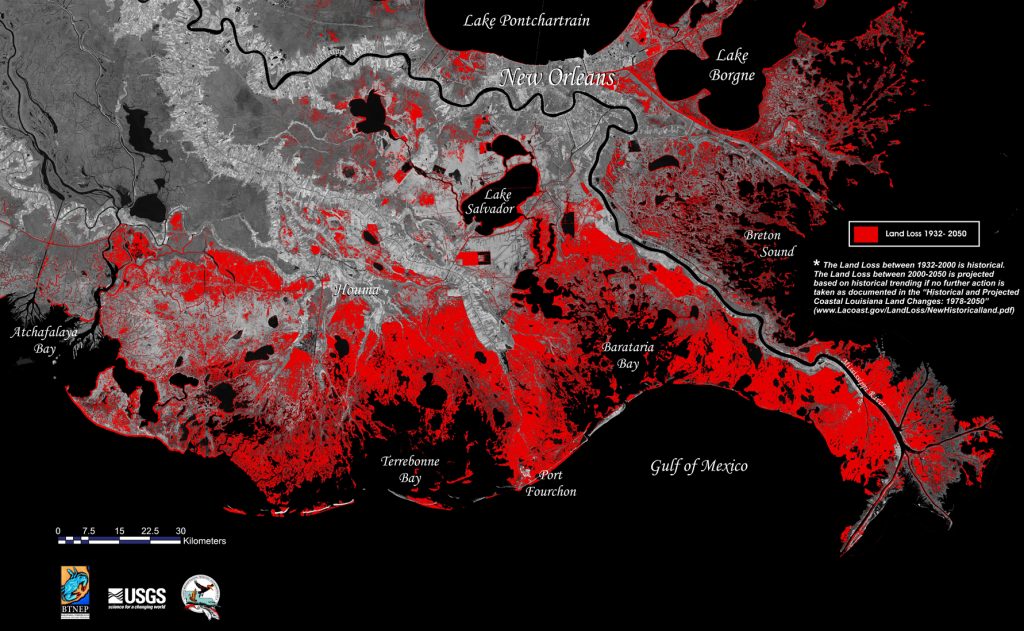
Louisiana contains the largest river delta in the Gulf, but is also the most misunderstood, imperiled, and abused. The Mississippi River Delta and coastal Louisiana are disappearing at an astonishing rate: a football field of wetlands vanishes every 1.5 hours. Over the decades, many of man’s activities have contributed to the loss, directly impacting thousands of acres of coastal wetlands and modifying the coastal hydrology, including straitjacketing of the lower Mississippi River with levees to control the river and protect communities from flooding and a vast network of shipping channels and oil and gas infrastructure, including onshore wells and thousands of miles of pipelines. In fact, one study found that estimates of oil and gas canal damage to coastal wetlands were “a conservative minimum of 36% of coastal loss, a midrange up to 69%, and reaching as high as 89%.” (Houck, the Reckoning: Oil and Gas Development in the Louisiana Coastal Zone (2015)). Adding to the crisis, Louisiana is ground zero for the impacts of rising seas and worsening storms associated with climate change. The risk to Louisiana’s vulnerable coastal communities are increasing due to the continued loss of coastal wetlands, more frequent and stronger hurricanes, and sea level rise.
Louisiana has created a Coastal Master Plan— a 50-year blueprint to:
- rebuild and sustain land along Louisiana’s coast;
- provide storm protection for cities and infrastructure; and
- help communities be more resilient for coastal restoration and protection efforts.
The plan contains natural “infrastructure projects” such as marsh creation, barrier island restoration, oyster reefs and sediment diversions – projects intended to harness the natural land-building power of the Mississippi River to build and sustain land. The Master Plan also contains coastal protection projects such as levees and floodwalls, as well as community resiliency programs, including home elevation, flood proofing, and relocation.
To address the root problem of our state’s rapid coastal land loss, we need to restore the natural processes that initially built our delta and “reconnect the river”. Controlled sediment diversions offer an opportunity to strategically re-establish hydrologic flows, carry land-building sediment and sustain land. The river diversions contemplated by the Master plan are intended to capture and divert sediment from the Mississippi River and deposit it into the basins with the goal of restoring the river’s natural process and building and sustaining land. Although coastal restoration projects are an important tool in efforts to restore Louisiana’s coastal wetlands, they come with negative consequences for some coastal communities and natural resources. For example, although sediment diversions are an important part of rebuilding sustainable coastal wetlands, there is no denying that they will negatively impact communities that lie outside levee protection and cause major, permanent impacts to saltwater species such as brown shrimp, oysters and coastal populations of bottlenose dolphins.
The Opportunity
Through implementation of Louisiana’s coastal master plan, we can rebuild coastal wetlands and develop truly resilient coastal communities. However, construction and operation of some restoration projects will have negative impacts on communities and natural resources. Once in operation, the Mid-Barataria sediment diversion will increase water levels for communities in the Barataria Basin outside levee protections, reduce brown shrimp and oysters available to fishers, and harm bottlenose dolphin populations. This in turn would have disproportionately high and adverse impacts on low lying low-income fishing communities due to reductions in abundance of oysters, brown shrimp, and certain finfish species. To ensure that low-income and minority populations benefit from the Coastal Master Plan and are not negatively impacted by the construction and operation of coastal restoration projects, we must:
- Ensure an Equitable Approach to Community Adaptation and Resilience:
The State must develop and implement an equitable approach to the impacts of coastal land loss and efforts to restore wetlands that acknowledges that the lives and livelihoods of low income BIPOC communities are the most impacted by disasters and they require focused programming and dedicated financial support. Although coastal restoration projects are important, the state must simultaneously identify and dedicate adequate and recurring funding for an equitable approach to adaptation and resilience. True “resilience” for vulnerable coastal communities requires more than flood protection; it requires economic stability, safety, and quality of life. A truly equitable approach to adaptation and resilience requires an acknowledgement that lives and livelihoods of low income BIPOC communities are the most impacted by disasters and they require focused programming and dedicated financial support to respond and rebuild. It is past time for the state of Louisiana to stand up for our state’s most vulnerable populations and help them develop the road map for their future. The needed “equitable” approach requires targeted engagement of frontline communities, ensuring robust community engagement, pre-disaster planning and dedicated funding for low income communities. - Full Mitigation of Negative Impacts of Restoration Projects a Must:
The State must acknowledge all of the negative consequences that coastal restoration projects, most particularly diversions, will have coastal communities and natural resources and fully mitigate those impacts. For example, the State must develop and fully fund actions needed to address the negative impact of the planned Mid-Barataria Diversion, on (1) tidal flooding in communities, like Grand Bayou and Lafitte, that lay outside levee protection; (2) mitigate/reduce where possible the major, permanent impacts to saltwater species such as brown shrimp, oysters and coastal populations of bottlenose dolphins in Barataria Bay, and (3) fully compensate for and address the adverse impacts on low-income and minority populations in the Barataria Basin heavily reliant on commercial and subsistence fishing due to reductions in abundance of oysters, brown shrimp, and certain finfish species.
The Louisiana Coastal Master Plan must be implemented with an equitable approach to Community Adaptation and Resilience.
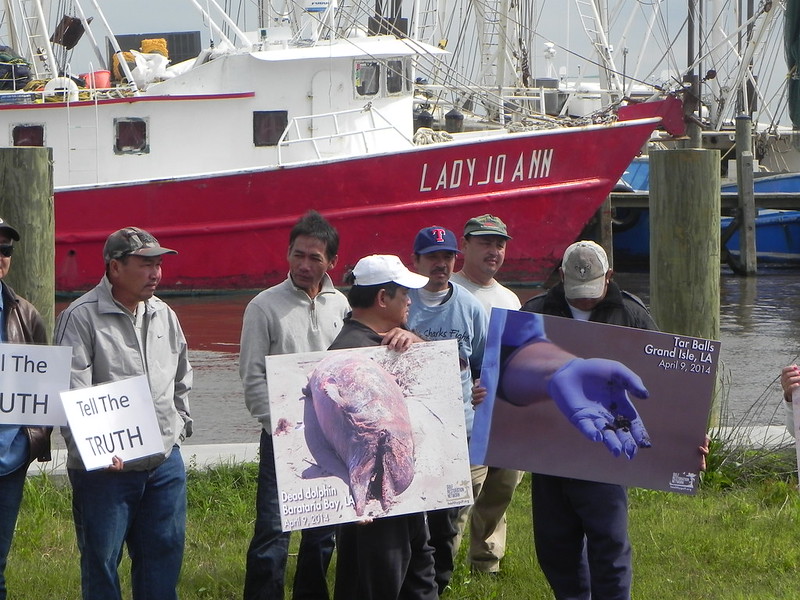
What Healthy Gulf Members Are Doing
Healthy Gulf works with coastal communities to ensure coastal restoration efforts involve impacted communities.
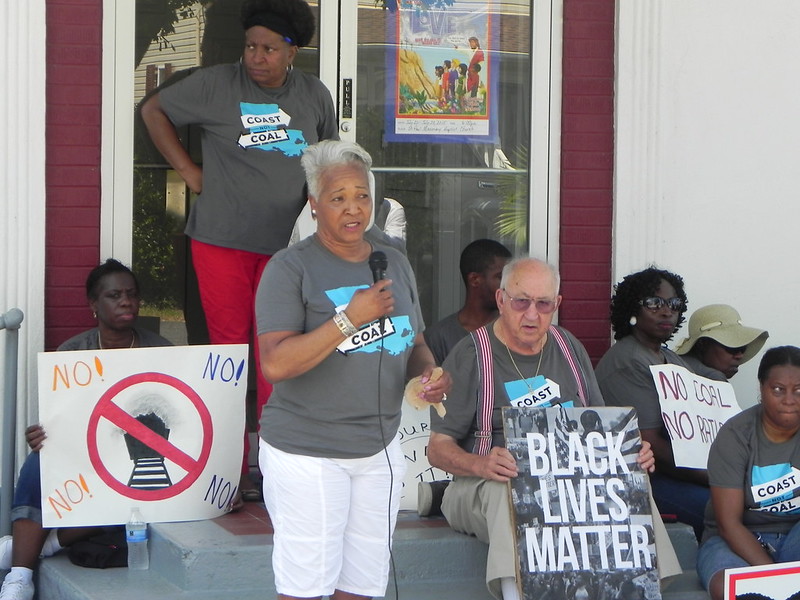
Healthy Gulf works to protect wetlands and communities on several fronts:
1. Consistency Review: Healthy Gulf works with communities to oppose projects that destroy wetlands and are not consistent with the Louisiana Coastal Master Plan for restoration.
2. Equitable Restoration: Healthy Gulf works with communities to ensure they are at the table at every step of the decision making processes that affect their communities.
3. Fix What You Broke: Healthy Gulf advocates for the oil & gas industry to take responsibility for the significant damages they have had on Louisiana’s coast and pay their fair share in restoring our coastal wetlands.
Get Updates on How to Get Invovled
Stay up to date on the issues you care about. Sign up to be an activist to receive alerts, newsletters, and updates from our team!

